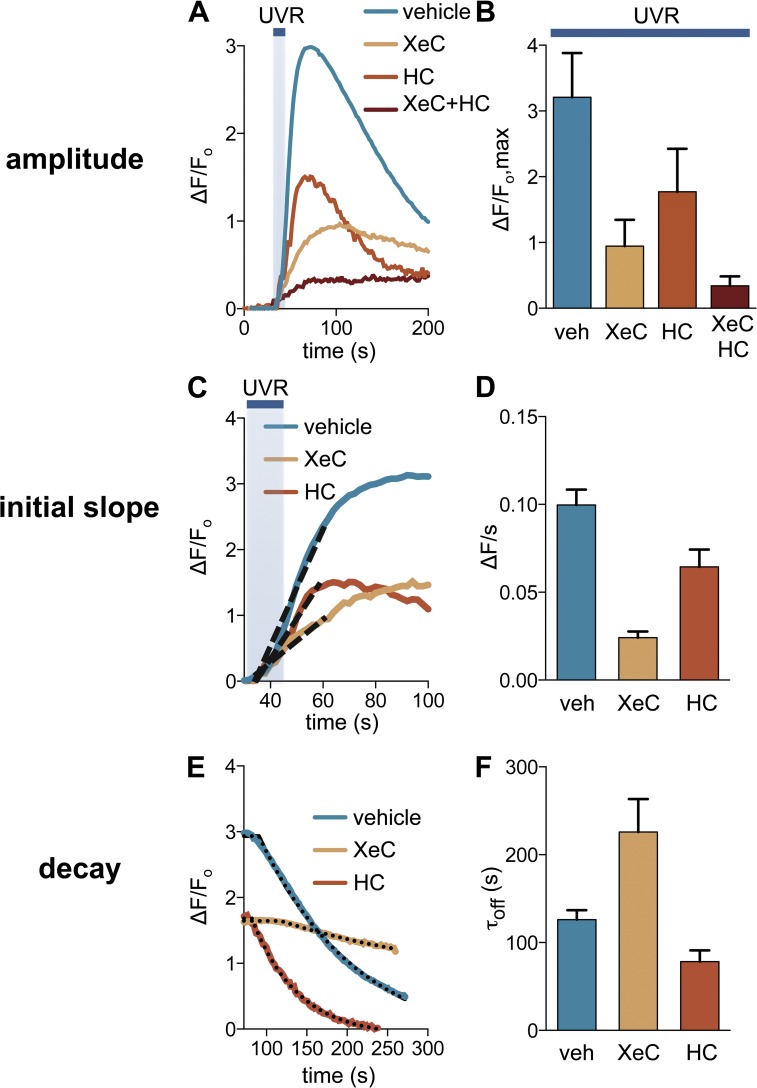Figure 5.
IP3R and TRPA1 activity mediate UVR-induced Ca2+ responses and regulate signaling kinetics. (A) In HEMs the amplitudes of the retinal-dependent Ca2+ responses induced by 240 mJ/cm2 UVR in the presences of vehicle (1% DMSO) were reduced by the IP3R antagonist XeC (25 µM) and the TRPA1 antagonist HC-030031 (HC; 100 µM), and further reduced in the presence of both XeC and HC. n = 10–15 cells per condition. (B) Mean peak UVR-induced Ca2+ responses in the presence of vehicle were reduced by ∼71% in the presence of XeC, by ∼45% in the presence of HC, and by ∼90% by the coapplication of XeC and HC, respectively. n = 6 experiments per condition. P < 0.0001 for XeC versus control, P < 0.007 for HC versus control, P < 0.0001 for XeC + HC versus control, ±SEM (error bars). (C) Analysis of the first 30 s of the UVR-induced Ca2+ response showed that treatment with XeC or HC reduced the initial slope compared to vehicle control. n = 10–15 cells from one experiment per condition. The broken lines represent the slopes of the initial increase in calcium (the straight line that fits the initial phase of the calcium response curve). The tangents of the angles formed by these lines with the x axis are represented in D (ΔF/s). (D) The mean initial slope of the Ca2+ response measured during the first 30 s after the beginning of UVR stimulation was reduced by ∼76% when cells were treated with XeC and by ∼35% when cells were treated with HC, compared with vehicle-treated cells. n = 6 experiments per condition. P < 0.0001 for XeC versus control, P < 0.03 for HC versus control, ±SEM (error bars). (E) The decay of the UVR-induced Ca2+ response (τoff), calculated by fitting the responses with a single exponential, was significantly longer in HEMs treated with XeC and reduced in HEMs treated with HC, compared with vehicle-treated cells. n = 10–15 cells per condition. The broken lines represent the exponential curve that fits the decreasing part of the calcium response shown in A. The exponential coefficient of these curves represents τoff, shown in F. (F) The mean τoff of UVR-induced Ca2+ response decay in HEMs treated with vehicle was increased by ∼79% in the presence of XeC and reduced by ∼38% in the presence of HC. n = 6 experiments per condition. P < 0.03 for XeC versus control, P < 0.03 for HC versus control, ±SEM (error bars).

